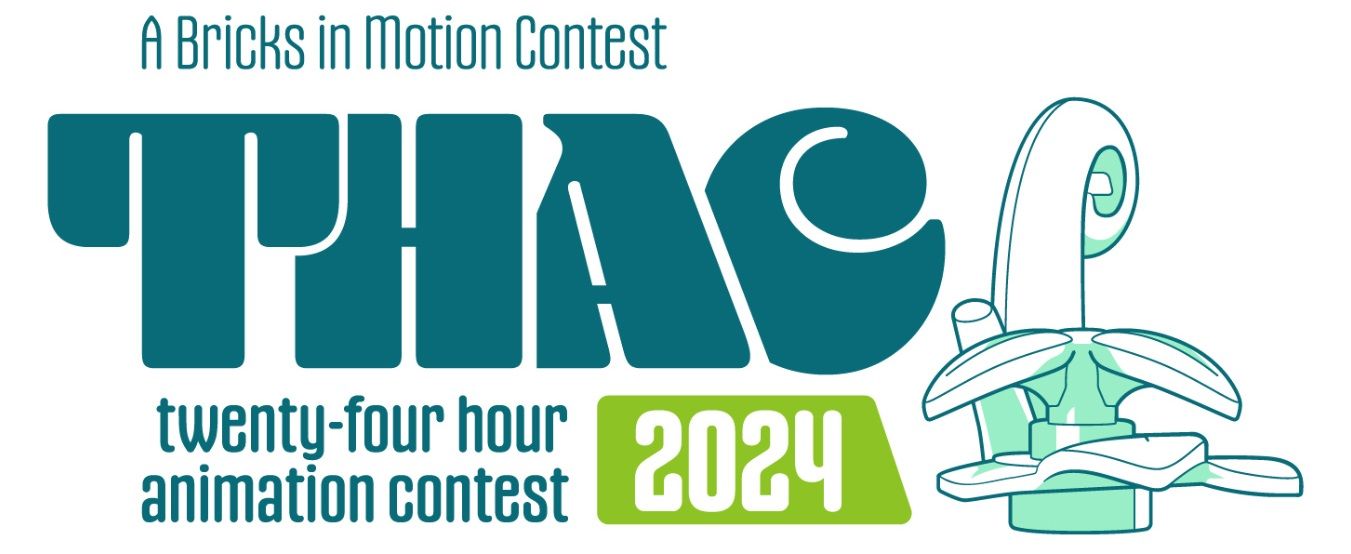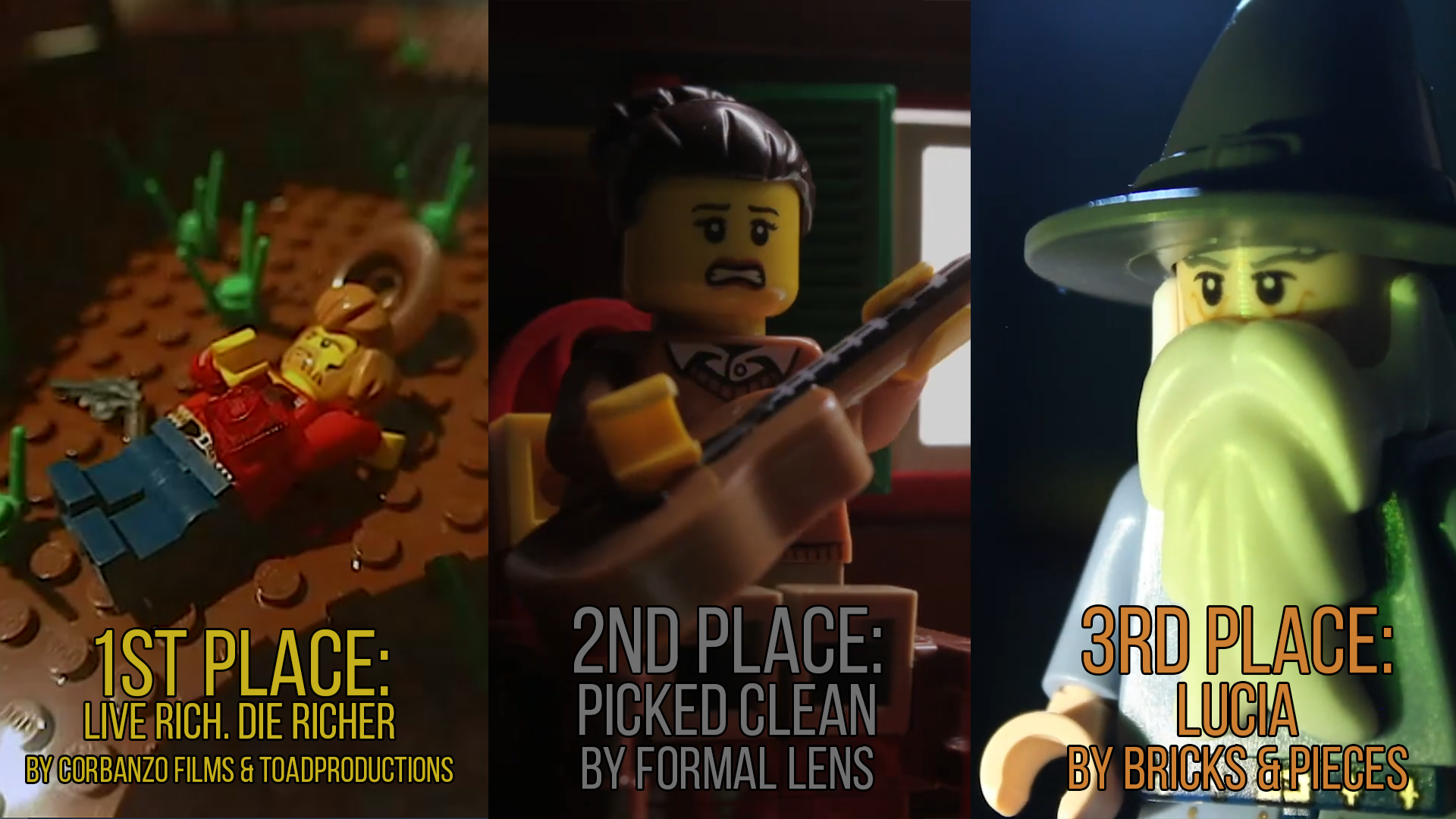Topic: Screenplay Writing Basics
Inspired from elsewhere this forum, I wanted to gather together some of what I learned and compile them together, to share with other brick filmers. I've been helped by so many people here as I finish my first Lego film, so this one way I can give back! I hope this helps people just as I've been helped with animating my film.
---
Screenplay Basics
CONTENTS:
1. Format
2. Title Page
3. Scenes & Framing
4. Narration & Description
5. Dialogue
6. Transitions
7 Proofreading
1. Format
Use 8 1/2 inch x 11 inch paper in portrait orientation.
Use a monospaced font that resembles classic typewriter type. Courier New is excellent.
Type in 12 point scale for Courier New, or when using other fonts, a scale that gives you 10 characters per inch.
Leave a 1 inch margin from the edge of the page on all sides, except the left, which is 1 1/2 inches.
Type on only one side of each paper.
2. Title Page
Without being too technical, About 1/3 the way down the title page, the title of the screenplay, and if applicable, the name of the episode if it's an episodic series, is typed. About 2/3 down the page, the name of the author(s) and the date that draft of the screenplay was completed is typed. Title page is double-spaced.
3. Scenes & Framing
Each scene is identified in capitals with three elements:
a. INT. {or} EXT. for interior or exterior scenes.
b. {LOCATION}: LIVING ROOM, POST OFFICE, PARK are examples. This represents your set for the scene.
c. DAY {or} NIGHT. This is to let the director know what lighting conditions are required. "DAWN and DUSK" may also be appropriate. No more detail is required.
INT. or EXT. are always abbreviated in the manner shown here, and always followed by a period. A hyphen separates the scene from DAY or NIGHT.
Example:
INT. DANCE CLUB FLOOR - NIGHT
4. Narration & Description
Narration is single-spaced.
Each scene should briefly described, using few but colorful details. Locations of doors characters may use should be indicated. Characters are usually present at the beginning of a scene. Following the description, a sentence is written describing the characters in the scene and their locations within the scene. The first time a character appears in any scene, it is capitalized, so that the actors can readily find their character. In descriptive text, the name of a character doesn't have to be capitalized again unless it's a new scene.
As characters enter a scene in progress, their name, and any props they're holding, are capitalized when they appear, and
from where, in this format:
Enter {CHARACTER NAME} from {location}.
Examples:
Enter GORDON, holding a TUBA, from the kitchen doorway.
Enter MARY from stage right.
Characters often carry or interact with props. All props that characters will interact with should be included in the scene description, so that readers will know that such objects will be used in the story. The prop should be identified the first time the scene appears where the prop also appears, even if it's not to be used until later in the story. This way, when filming, you know it has to be there, and you won't have to reshoot everything if it's "forgotten". The prop is capitalized the first time it appears and the first time in each scene it's used, so that the script can easily be scanned to identify all the props needed in any scene.
Narration should be concise, but colorful and clear. While it's best to keep narration short, it's better to use a few extra words if needed to explain something accurately. Narration should only describe what's seen. Examples of narration to avoid are:
a. Roger is an undercover cop. {How can you show that? Just describe the plain clothes he's wearing, and let his secret identity be revealed at the time the story calls for it.}
b. Jane has a crush on Arnold that he's unaware of. {You can't film a crush. You can film actions that show her flirting with him, and Arnold's oblivious reactions. Describe the actions.}
c. The alien general is from a culture where the the offspring kill and consume their elderly. {Pretty gross example, but again, this is not prose, and the above example can not be seen. This would have to be revealed by showing the act, and how this ritual, normal to the aliens, does not raise concerns within their culture.}
Don't narrate in past tense. It's all happening before our eyes as we're seeing it.
The most important rule in writing screenplays: Only write what can be seen. The second: Be brief, but descriptive and clear.
5. Dialogue
Dialogue consists of two components:
a. Name of character speaking
b. Dialogue
When a character speaks, the character's name is always capitalized and centered on the page. If a character is not present on the screen but speaking from somewhere off-camera, the name is followed by (o.c.) for off-camera. If the character is not present in the scene, but the voice is transmitted from another location, such as radio or television, the name is followed by (v.o.). A narrator is described as NARRATOR and, as a voice-over, (v.o.) is optional when it is assumed that there is never a visible narrator. It is still recommended to use (v.o.) in any case.
Dialogue begins 2 1/2 inches from the left edge of the page, and ends 6 inches from the left edge (which is 2 1/2 inches from the right edge, centering it.) This equals 35 characters of text per line. Open Office is a freeware word processor that allows you to create and name your own margins by pressing [F11]. I named this margin "Screenplay- Dialogue".
Physical gestures, turns to specific characters, or other cues while talking can appear in parentheses. Be brief.
Example:
CHARLES
It was a rough day today, Louie. (Wipes
forehead.) I really sweated it out.
Example:
MRS. DAY
You all did just fine on that last test,
but one of you exceeded everyone. (To
Kim.) Kimberly, you got a perfect score.
(Opens her desk drawer and takes out a
box). You win the prize!
Put a space above the character's name, and below the character's dialogue, to make everything more readable.
If a character's dialogue goes from one page to another, type (over) at the last line on the page, so it's understood that there's more on the next page. Then restate the character's name on the next page followed by (cont'd.)
Avoid using (beat.) for a pause. Write (pause.) instead, and let the actor decide the appropriate length.
Although I don't do this, in television scripts, all dialogue is double-spaced, allowing notes to be filled in. Movie script dialogue is single-spaced.
6. Transitions
Transitions are usually camera angle changes within a scene, but can also be used to go from one scene to another. These are the most common transitional elements:
a. CUT TO {next scene}: Used when the change is executed in one frame. Avoid using SMASH CUT TO. Amateurs use this term to describe a cut to an intense moment. Whether or not it's intense, it is still done with one frame and is technically no more special than an ordinary CUT TO.
b. DISSOLVE TO {next scene}: Used when the transition blends itself from one cut to another over time. The best length of time of a dissolve depends on the drama and pacing of the story at that point.
c. FADE IN/ FADE OUT: A type of dissolve, used typically at the beginning or ending of a story, respectively. Usually it's a fade from or to black.
d. BEGIN OPENING/CLOSING TITLES {and} END OPENING/CLOSING TITLES are used where the credits belong. Whatever is seen during the credits is written in between these cues.
When cuts are used to go to an entirely different scene, the new scene is described on the next line (in INT/EXT. {SCENE - DAY/NIGHT format).
7. Proofreading
a. Check everything over. Is the narration clear?
b. If a character's trait is vital to the plot, is it established elsewhere?
c. Spell check is not perfect.
d. Ask people outside your family (who are almost always approving) for honest criticism and areas where the writing could be improved.
e. Some of these guidelines sound technical or pointless, but they are not hard to adjust to and make the difference between an amateur screenplay and a competent, professional-looking one.
---
Hope this helps anyone new at screenwriting!
Last edited by HoldingOurOwn (August 1, 2012 (05:44am))
"None practice tolerance less frequently than those who most loudly preach it."










